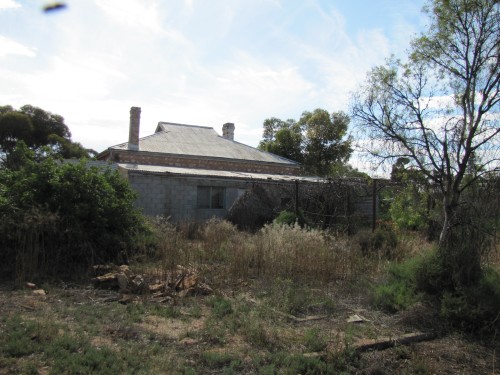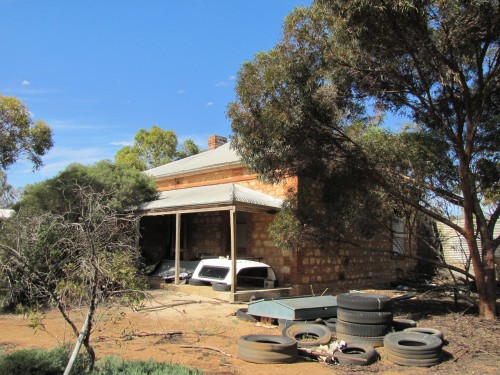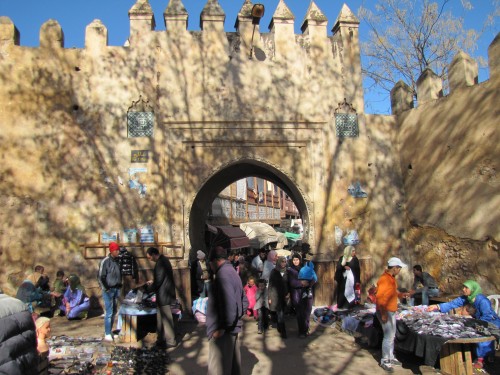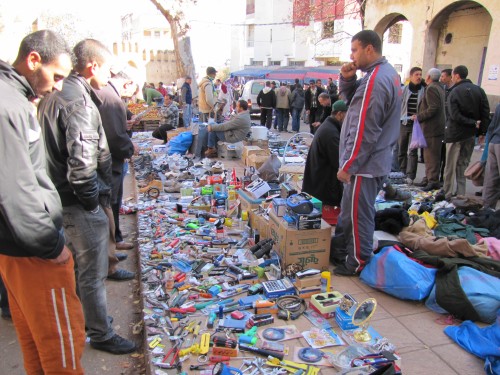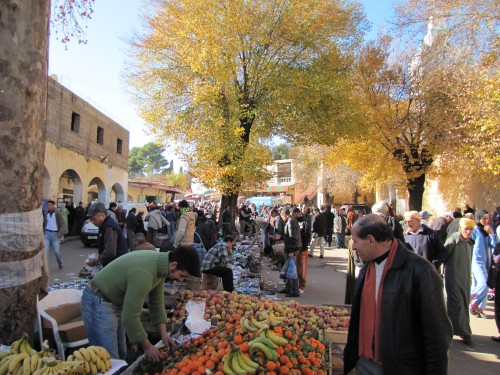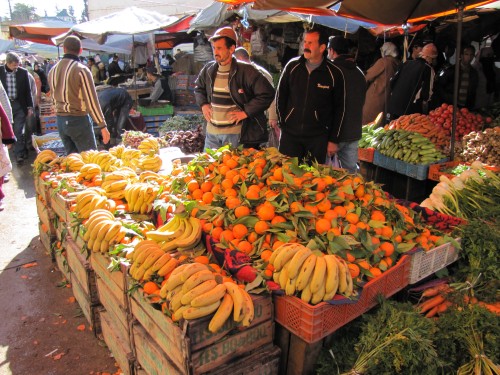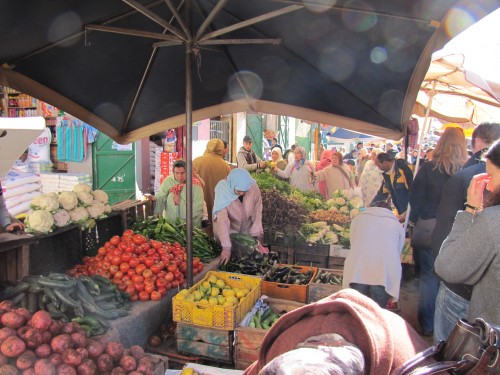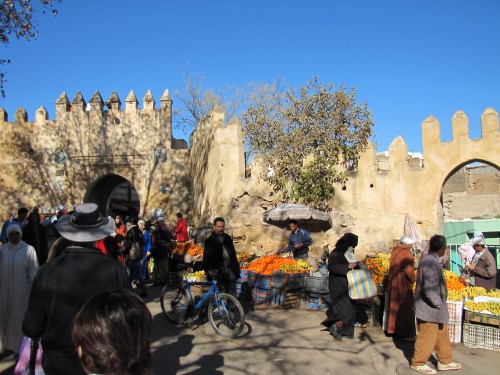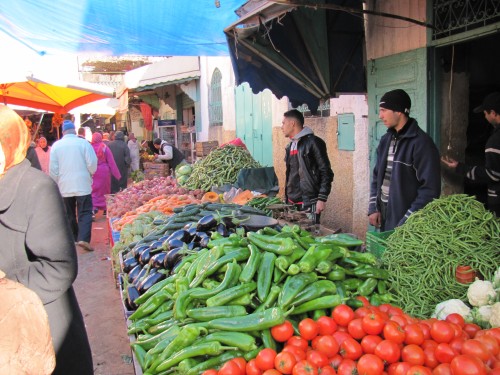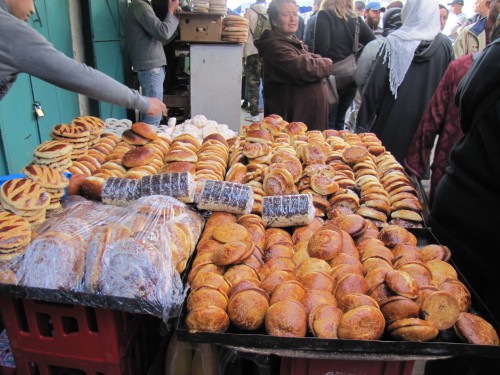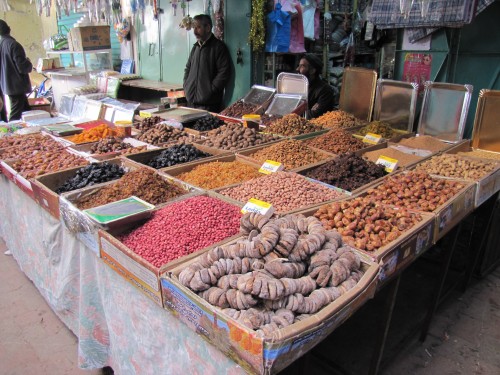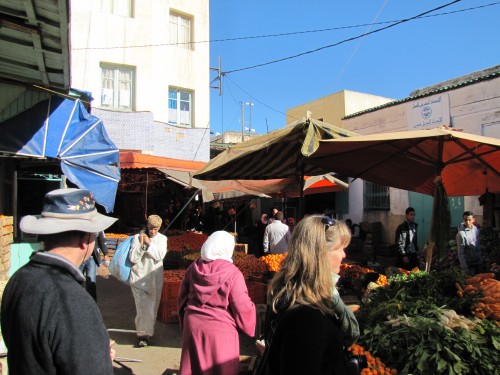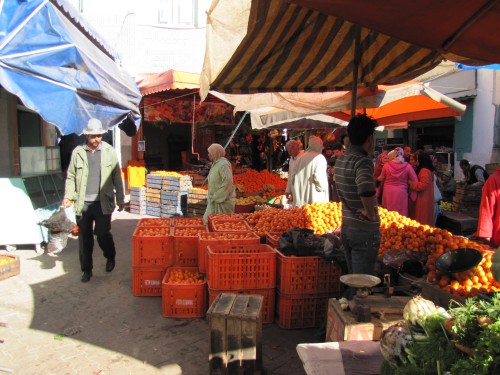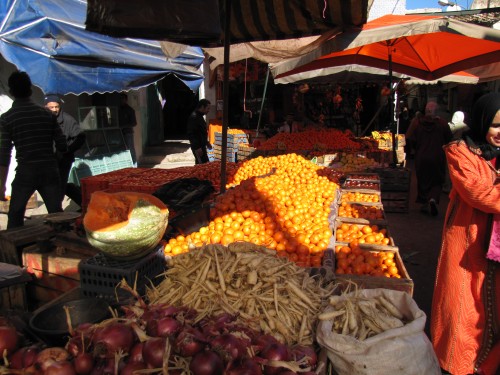Where I grew up at Taplan
Taplan is a small farming community about 30km south east of Loxton in the Murray Mallee region of South Australia. The town was established in the early 1900s and was the result of clearing much of the mallee (eucalyptus) scrub over many years of hard work. These days the area is mainly a cereal growing area – wheat, barley, canola and some oats. Some sheep and cattle are also kept by local farmers.
I grew up in this town in the 1950s and 60s. Over recent days on this site I have written about school life and other aspects of life in this small community. Today the town is a mere shadow of its former self. Many houses are now empty, including the one shown in today’s photos, the Institute Hall and the primary school are now private residences, the post office and store have closed and the only church (Lutheran) often has only half a dozen people attending. The railway ceased operating some years ago too.
My parents moved to this district when they married in the late 1920s. My father farmed the family land, initially about 600 acres but later over 1000 acres as he bought adjoining properties. My brother bought another farm a few miles to the north when he married. Later, when another brother married he bought the original farm from my father. Both of these properties have since been bought by my nephew who has expanded even further with several more properties bought in recent years. It seems quite likely that one or more of his three sons will soon be working these properties with their father.
The old homestead shown in today’s photos is where I grew up from 1947 until my parents and I moved to Loxton in 1965. During those years I enjoyed a wonderful childhood playing around the house and helping my mother in the garden. Our extensive garden included many fruit trees, such as:
- oranges
- lemons
- mandarins
- nectarines
- apricots
- peaches
- pears
- loquats
- figs
- grapes
- passion-fruit
In the vegetable garden we grew:
- carrots
- cauliflower
- cabbage
- lettuce
- pumpkins
- watermelons
- rockmelons
- beetroot
- tomatoes
- turnips
- and probably quite few I have forgotten.
We had a small herd of cows but I never had the job of milking them. My job was to take the milk, pour it into a separator and turn the handle until the cream was separated from the milk. Sometimes I helped my mother make homemade butter. Any leftover milk was given to the small herd of pigs which were also our source of meat. Very rarely did we eat our own ham or bacon. More often it was either poultry – such as chicken or duck – or mutton from sheep which my father would butcher. Any excess cream was sold, the large cans of cream being transported to Murray Bridge (where I now live) by train in refrigerated vans.
The chickens – we always called them “chooks” – were largely my responsibility. While I did provide them with some wheat or other grain to eat, most of the time the chooks foraged in the garden, around the sheds or even out in the nearby paddocks. We invented “free range eggs” before it was fashionable.
My job every evening was to “look for the eggs”. I didn’t just have to gather the eggs from the laying boxes in their shed, I actually had to actively search out where they were laying. This could be anywhere in the implement sheds, in farm machinery, behind boxes, under bushes – I had to use my keenly developed eyesight to watch where the hens were so I could find their eggs.
I was not always as alert as the hens were cunning. They would lay their eggs in a secret place until they had ten or fifteen, and then they would go “broody”. I quickly learned that the peck of a broody hen hurt, so often I would leave them be. A few weeks later a new batch of fluffy chickens would grace our farm yard. In this way we replenished those we had eaten. Of course we always had far too many eggs and no matter how many wonderful cakes and biscuits mum made, there was always an excess, and these I had to wipe clean with a damp cloth before packing them in specially designed crates. These crates were taken to the nearby railway station and transported off to markets in Adelaide.
The area immediately surrounding the house and sheds of our homestead consisted of a large patch of native mallee (eucalyptus) scrub. I am much younger than my three brothers who were never much interested in playing with me when I was growing up, except when I was a baby. During my school days I had to entertain myself during school holidays and on weekends. The nearby scrub kept me very entertained as I explored it, developing a love of the environment which persists to this day. I now own a little patch of mallee scrub where I now live in Murray Bridge. You can see photos of birds seen around my home on Trevor’s Birding.
The last photo I will share today is another view of the house on the farm where I grew up. It is now a ruin; my brother built a new house just a few metres north of this one a few years after he married. It is sad to see so many similar old homes like this one going to ruin, but that is just the way things are; there is no use bemoaning the fact that maintenance on old houses is expensive, and there is just not the concentration of population in rural Australia to keep houses like this occupied.
Market day in the village of Sefrou, Morocco
Towns like Sefrou near Fes in Morocco become bustling centres of trade on market days. Farmers from the surrounding districts bring in their produce for sale, setting up on stalls in the squares, lanes and streets. The chaotic arrangement seems to work very effectively and the range of items on sale is enormous: vegetables such as tomatoes, potatoes, cauliflowers, carrots, onions, cucumbers, pumpkins, capsicans, and fruit like mandarins, oranges, bananas, dates, apples and a range of spices and nuts.
Then, like in the photo below, some vendors offer an enormous range of items: pens, radios, clothing, key rings, scarves, DVDs, cassettes, tools – the list goes on and on. It is a fascinating scene.
Farmers’ markets in the village of Sefrou, Morocco
Over recent days I have been showing photos taken on our visit to the village of Sefrou about 30km from the city of Fes in Morocco. We visited on the day they had the farmers’ markets in the streets and lanes of the village. Today I share a few more photos.
Photos of market day in Sefrou, Morocco
On our visit to the village of Sefrou we were lucky to be there on market day. Sefrou is about 30km from the city of Fes. The farmers from the surrounding countryside bring in their produce and set up stalls in the streets and lane ways. It brings the town to life and the hustling crowds flock to buy their fruit, vegetables and other goodies – like the pastries shown below.
We couldn’t resist and bought some delicious bananas and mandarins.
On reflection, these markets are not so different to what we have here in Australia. Certainly, there is much variation in some of the produce for sale – no local farmers grow bananas or dates here in South Australia, for example. But they bring what they grow and local people flock to these events knowing that they are buying good quality food produced locally. It’s a growing trend here in Australia, but I’d say that in places like Sefrou it has been a tradition for many years, perhaps even centuries.
Market day in Sefrou, Morocco
One aspect of travelling in Morocco that I looked forward to was the food. I believe that sampling the food delights of a different country, and especially a totally different culture like Morocco, is high up on my list of reasons for travelling. Mind you, I am generally very conservative in my selection of food when not travelling, whether that is at home or eating out in a local restaurant. On our touring I think I surprised myself in what I sometimes selected to eat; I know I really surprised my wife and daughter. I was often quite the adventurous one, and now I have some wonderful memories, not to mention a desire to travel the more exotic destinations.
While we were staying in Fes we took a day trip to the village of Sefrou some 30km away. Added to the delight of our visit was the fact that it was market day. Farmers from around the district descended on the town with their produce. They set up their stalls everywhere in the streets. Over the next few days I will share some of the photos taken at the market. The fruit and vegetables on display were not only colourful – they looked delicious.
And they tasted great too – we bought some bananas and mandarins.
